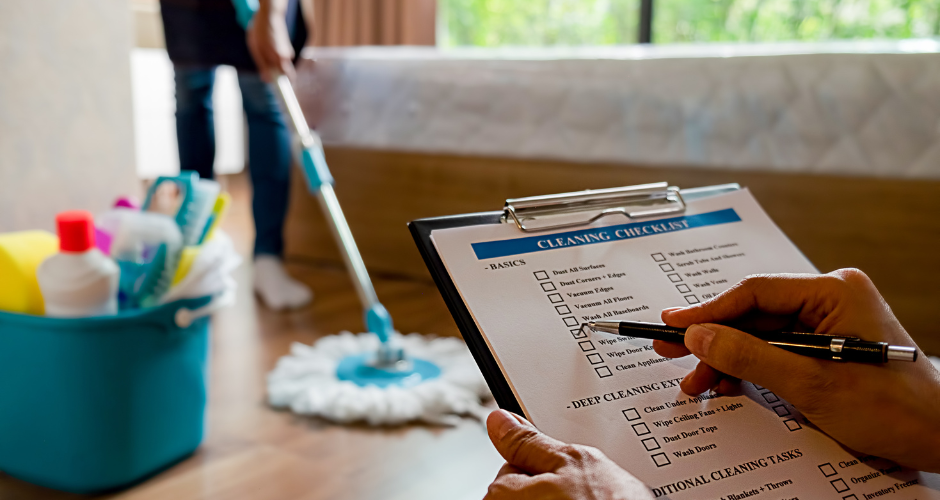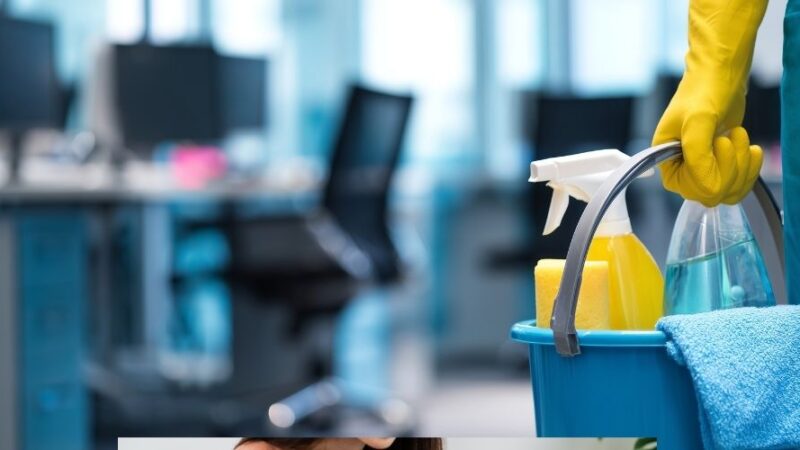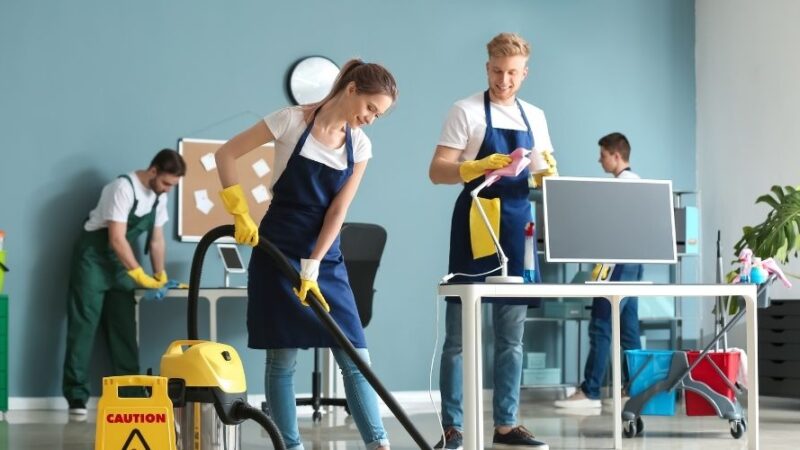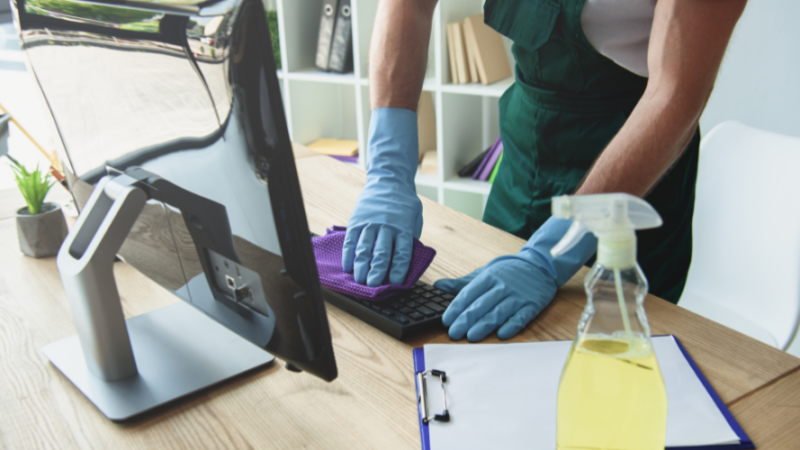Office Cleaning Checklist: How to Maintain a Healthy Workspace

A clean and organized office is fundamental to ensuring the health and productivity of employees, and it plays a critical role in creating a positive environment for both staff and clients. The workplace is where people spend a significant portion of their day, and maintaining cleanliness can directly impact employee well-being, productivity, and satisfaction. Beyond health benefits, cleanliness in an office reflects the professionalism of the business and helps create an atmosphere that fosters creativity and collaboration.
In this article, we will dive into the importance of keeping an office clean, and outline a comprehensive office cleaning checklist that covers daily, weekly, and monthly tasks to help maintain a healthy and inviting workspace.
Why Is Office Cleaning Important?
Offices are high-traffic areas with numerous employees, clients, and visitors coming in and out throughout the day. As such, these spaces quickly accumulate dirt, dust, germs, and clutter. Without proper cleaning, these contaminants can lead to multiple problems, ranging from minor annoyances to serious health issues. Here are some key reasons why office cleaning is crucial:
- Health and Safety: Germs can thrive on desks, keyboards, and other shared surfaces. Regular cleaning and disinfecting reduce the risk of spreading illnesses, such as the common cold or flu, among employees. Additionally, accumulated dust can lead to allergies and respiratory problems.
- Productivity Boost: A clean and organized environment helps employees stay focused and productive. Clutter and dirt can be distracting, lowering morale and productivity. Clean spaces contribute to mental clarity, reduced stress, and improved efficiency.
- Positive Impressions: The cleanliness of your office reflects your business values and standards. A well-maintained workspace leaves a positive impression on clients and visitors, reinforcing your professionalism.
- Compliance and Standards: Certain industries have specific health and safety regulations requiring regular cleaning and sanitation. Maintaining a clean office ensures compliance with workplace safety regulations and industry standards.
The Benefits of a Clean Workspace
- Improved Air Quality: Accumulation of dust, dirt, and allergens in the office can negatively impact indoor air quality. Regular cleaning, including dusting, vacuuming, and proper ventilation, helps maintain air quality and prevents respiratory issues. Air filters in HVAC systems also need regular maintenance to improve air circulation and remove airborne contaminants.
- Reduced Spread of Illness: High-touch areas, such as door handles, phones, and keyboards, are breeding grounds for germs. Regular disinfection of these surfaces helps minimize the spread of bacteria and viruses, keeping your workforce healthier and reducing absenteeism.
- Increased Employee Morale and Satisfaction: A clean and well-organized workspace contributes to a positive and professional atmosphere. Employees feel more motivated and respected when their workplace is clean, which in turn leads to higher job satisfaction and improved morale.
- Enhanced Focus and Creativity: A clutter-free environment helps employees focus better on their tasks. The visual cleanliness of the workspace can reduce distractions and create mental space for creativity and problem-solving.
Workplace Cleaning Mistakes and How to Avoid Them
Office Cleaning Checklist
To ensure your office remains clean, healthy, and productive, follow this office cleaning checklist. Divided into daily, weekly, and monthly tasks, this guide will help you stay organized and ensure that every area of the office receives the attention it needs.
Daily Office Cleaning Tasks
These are the essential tasks that should be done every day to keep the office clean, hygienic, and free of clutter.
- Empty Trash Bins: Trash bins, particularly in the kitchen, restrooms, and individual workspaces, should be emptied daily. This prevents foul odors, reduces the risk of pests, and keeps the office looking neat. Always replace liners.
- Wipe Down Desks and Surfaces: Desks, countertops, and other surfaces should be wiped down with a disinfectant every day. This helps remove dust, dirt, and germs that accumulate throughout the workday.
- Disinfect High-Touch Areas: Frequently touched surfaces, such as door handles, light switches, phones, and shared equipment, should be disinfected daily to reduce the spread of germs.
- Clean the Kitchen and Break Areas: Kitchen counters, sinks, and appliances should be cleaned daily to prevent food residue and bacteria build-up. This includes wiping down microwave interiors, coffee machines, and refrigerators.
- Sweep and Mop Floors: Hard floors in common areas and high-traffic zones should be swept and mopped daily to prevent dirt and dust accumulation.
- Vacuum Carpets and Rugs: High-traffic areas with carpets and rugs should be vacuumed daily to remove dust, dirt, and allergens.
- Clean and Restock Restrooms: Bathrooms should be cleaned and disinfected daily, focusing on toilets, sinks, faucets, and other fixtures. Stock restrooms with fresh supplies such as toilet paper, soap, and paper towels.
Weekly Office Cleaning Tasks
These tasks should be performed once a week to maintain a deeper level of cleanliness in areas that don’t accumulate dirt as quickly as high-traffic zones.
- Dust All Surfaces: Dust all surfaces, including desks, shelving, window sills, blinds, and baseboards. Dust can accumulate in overlooked areas, contributing to allergies and poor air quality.
- Clean Windows and Mirrors: Clean windows and mirrors to remove smudges, fingerprints, and dust. Clean windows allow more natural light into the office and improve the overall atmosphere.
- Sanitize Office Equipment: Sanitize office equipment like printers, copiers, and telephones that are frequently used by multiple people. These devices can harbor germs and bacteria.
- Polish Furniture: Wooden or metal furniture, such as tables and chairs, should be polished weekly to maintain their appearance and protect the material from wear and tear.
- Organize Common Areas: Reorganize meeting rooms, lounges, and break areas to ensure they remain clutter-free. This contributes to a more organized and professional office environment.
- Clean Breakroom Appliances: Deep clean the refrigerator, microwave, and other kitchen appliances to prevent the build-up of food residue, odors, and bacteria.
Monthly Office Cleaning Tasks
Monthly tasks focus on deep cleaning areas that require less frequent attention but are still critical to the overall cleanliness and maintenance of the office.
- Deep Clean Carpets and Upholstery: Hire professional cleaners to deep clean carpets and upholstery monthly. This removes deep-seated dirt, allergens, and stains that regular vacuuming may miss.
- Clean Air Vents and HVAC Systems: Dust and debris can accumulate in air vents and HVAC systems over time. Monthly cleaning of these areas improves air quality and helps the system operate efficiently.
- Wash Walls and Baseboards: Wipe down walls and baseboards to remove dust, fingerprints, and scuff marks. This helps maintain the office’s appearance and cleanliness.
- Organize Storage Areas: Storage closets, filing rooms, and other storage areas can become cluttered over time. Monthly organization ensures these spaces are functional and free of unnecessary items.
- Check for Maintenance Issues: Inspect the office for any maintenance issues, such as leaky faucets, broken fixtures, or damaged furniture, and address them promptly to prevent larger problems.
- Test Smoke Detectors and Fire Extinguishers: Ensure smoke detectors and fire extinguishers are functioning correctly by testing them monthly. This is critical for the safety and compliance of the office.
- Clean Light Fixtures: Clean light fixtures and replace any burnt-out bulbs to ensure adequate lighting in the office. Clean fixtures also improve energy efficiency.
Best Practices for Office Cleaning
To maintain an office that remains consistently clean and healthy, consider these best practices:
- Encourage Employee Participation: Encourage employees to keep their personal workspaces tidy by providing them with basic cleaning supplies, such as disinfectant wipes and hand sanitizers.
- Create a Cleaning Schedule: Assign specific cleaning tasks to employees or a professional cleaning service and ensure that they are completed on schedule. Having a structured plan prevents cleaning tasks from being overlooked.
- Hire Professional Cleaners: While daily maintenance can be handled in-house, weekly and monthly deep cleaning tasks may require the expertise of professional cleaners. Their specialized tools and techniques can ensure a more thorough clean.
- Prioritize Health and Safety: Pay special attention to high-touch areas and communal spaces, as these are hotspots for germs and bacteria. Prioritize the cleaning of these areas to maintain a healthy environment.
Conclusion
Maintaining a clean and healthy office is essential for the well-being of your employees and the overall success of your business. By following a structured cleaning routine and ensuring that daily, weekly, and monthly tasks are completed, you can create a workspace that promotes health, productivity, and a positive atmosphere. Whether you choose to manage cleaning in-house or hire professional services, a clean office is an investment that pays off in the form of a healthier, more motivated, and more efficient workforce.



